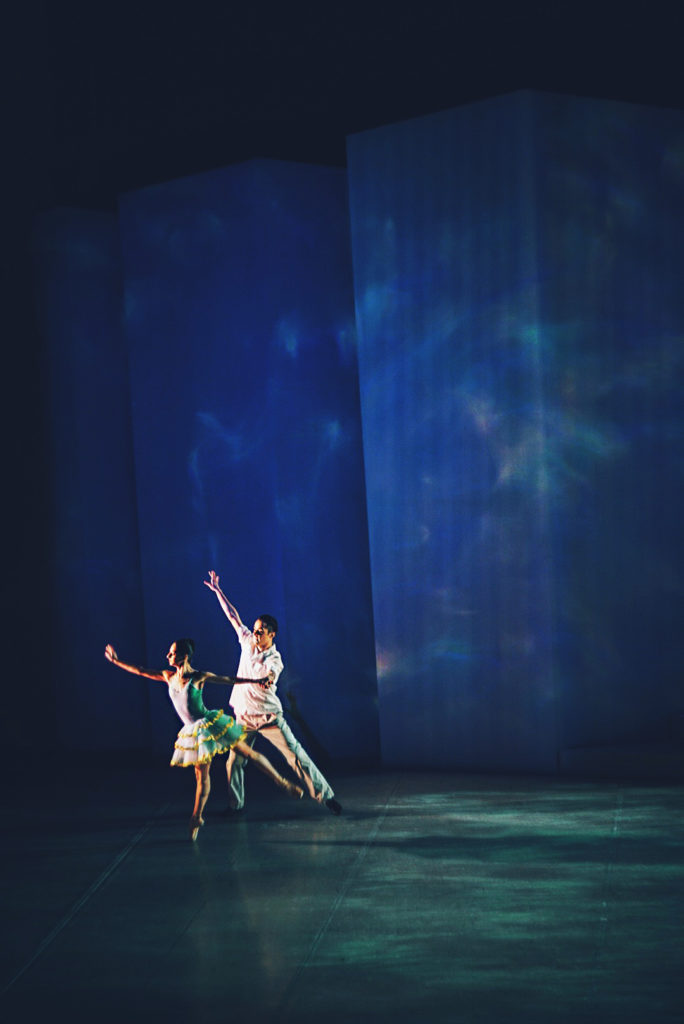By Cassidy DeStefano, news editor
A single string instrument played an eerie rhythmic melody as two men hoisted Spencer Keith’s limp body up by the arms – a haunting recreation of a rebel’s crucifixion.
This snapshot of political repression was one of many that choreographer Jose Mateo strived to weave into The Cuba Files, his self-named dance company’s latest performance, which runs through March 6 at the Old Cambridge Baptist Church.
“I think ballet is intrinsically cross-cultural,” Mateo said. “This particular program, which is more specific to Cuba, is really looking at music that ranges from very specific national character to popular music that tries to transcend its particular culture.”
“Escape” was the first of the show’s three acts, which Mateo described as a visual representation of the distrust among Cuban communities as a result of the country’s authoritarian government regime.
“The first act is the most straightforward in terms of story,” company dancer Magdalena Gyftopoulos said. “It has elements of hope, but fear overpowers that to some extent.”
Gyftopoulos and the rest of the company bounded about the stage clothed in rich forest green, never daring to make direct eye contact with the audience. The tempo changed to match their motions, with dramatic pauses in the music drawing attention to the most subtle details: The flex of Keith’s bicep when he resists the political peacekeepers, the arch in his partner’s back when he lifts her in the air.
“The whole first ballet basically follows the story of one woman who is unable to contain the secrecy that is usually kept by people who are afraid they may be discovered as dissidents,” Mateo said.
“Danzones Baléticos,” the second act, was meant to portray a more jovial theme, Mateo said. The choreography contained steps from traditional Cuban dances that were popular in the mid-20th century. Couples clad in khakis and Easter pastels sauntered across the stage, performing a hybrid of precise footwork and fluid arm movements. The overall naivety offered a stark contrast to its more intense counterpart.
Still, it was the third act, an abstract installment titled “In Our Minds,” that posed the greatest challenge during rehearsals, Gyftopoulos said.
“The new one I actually asked Jose about because I was confused about my role in it,” she said.
“It’s less so about the physical political repression that people undergo, but it’s more about a kind of internal or interrelational oppression.”
The piece was a frenzy of kaleidoscopic lighting and purple jewel tones. As pairs took the floor, they danced around each other like magnets, drawn together by a confining force that seemed to shrink the stage.
“The choreography really explores a relationship between two people whose lives are very intertwined,” Mateo said. “The point of that is to really show how we’re all entrapped by the complexities and psychological factors of personal relationships that ensnare us.”
Gyftopoulos said that the art of dance transcends individual cultures to tap into the universal values of human emotion.
“Dance is a big part of a lot of cultures for a reason,” she said. “For thousands of years, when people could find an excuse to dance, they would. It’s because it’s something that drives us, and I am just constantly feeling the pull.”
Photo by Alexandre Choueiry















